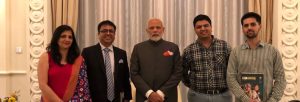(February 10, 2025) Dr Thomas Abraham is the founder of the Global Organization of People of Indian Origin (GOPIO). He was honoured with the Bharatvanshi Gaurav Award by the Vice President of India in 2008 and the Pravasi Bharatiya Samman Award by the President of India the same year, in recognition of his decades-long efforts in connecting the global Indian diaspora.
The 1980s were a defining period for the Indian diaspora. Indians migrating abroad, whether to the United States, Canada, the Caribbean, or Africa were met with both opportunities and adversity. While they thrived professionally, many faced discrimination, lack of representation, and human rights violations in several regions. In countries like Guyana, Fiji, and South Africa, people of Indian origin (PIOs) encountered systemic racism, political marginalisation, and, in some cases, outright violence. Even in the United States, where Indian professionals were gaining recognition, incidents like the ‘Dot busters’ attacks in New Jersey where Indian women wearing bindis were specifically targeted created an urgent need for organised advocacy.
Against this backdrop, a young metallurgist from Kerala, Thomas Abraham, found himself drawn into the mission of uniting the Indian community. His journey from a graduate student at Columbia University to the founder of the Global Organization of People of Indian Origin (GOPIO) is a story of commitment to the global Indian community.
Founded in 1989, GOPIO currently has chapters in more than 50 countries around the world, spreading across Africa, the Caribbean, Central and South America, Europe, the Middle East, Oceania, and South Asia. “Within five years of its formation, GOPIO played a crucial role in elevating People of Indian Origin (PIOs). In the years that followed, leaders of Indian descent who were GOPIO members even rose to top positions, including the presidency in Guyana and the prime ministership in Trinidad and Tobago, and Fiji,” Dr. Abraham remarked in an interview a few years ago.
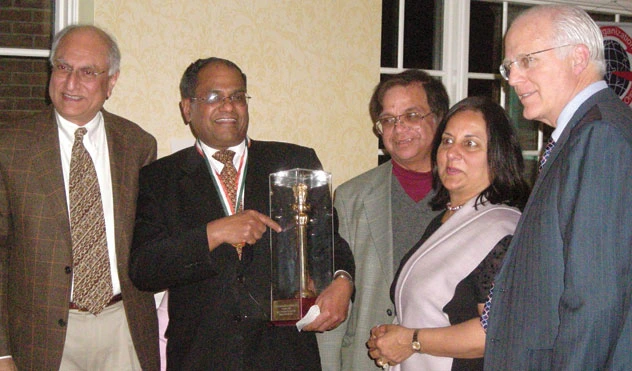
Dr. Thomas Abraham at the GOPIO Connecticut chapter with members and Congressmen during a felicitation ceremony following his Pravasi Bharatiya Samman recognition in 2008
A pioneer in the PIO movement
Dr. Abraham has been a key figure in the PIO movement for over four decades. In 1989, he coined the term People of Indian Origin (PIO) while organizing the First Convention of PIOs in New York. His most significant contribution has been the establishment of several Indian community institutions, including the Federation of Indian Association (FIA) of New York in 1977, the National Federation of Indian-American Associations (NFIA) in 1980, and the Global Organization of People of Indian Origin (GOPIO) in 1989. He played a key role in founding several other Indian American communities. “We initiated the PIO card and Dual Nationality resolution. It took some time but in 2001, PIO card was introduced and after a long time, dual nationality (Overseas Citizenship) was recognized in 2006,” he informed in an interview.
A dedicated community activist, Dr. Abraham currently serves as the Executive Trustee of the GOPIO Foundation and Chief Editor of GOPIO News. For nearly 40 years, he has been a vocal advocate for issues affecting the global Indian community. Beyond his activism, he is a recognized expert in advanced materials and nanotechnology and serves as the President of Innovative Research and Products (iRAP) Inc., a technology and market research firm based in Stamford, Connecticut.
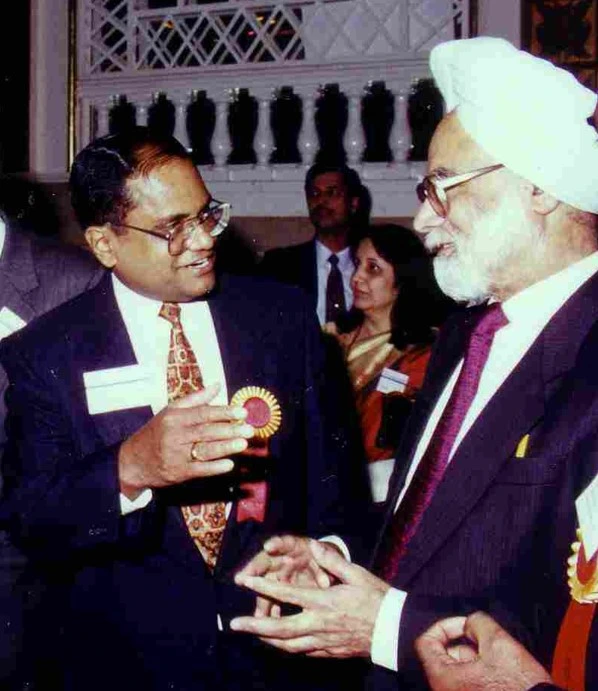
Dr Abraham with former PM Dr Manmohan Singh in New York | Photo Credit: LokVani
From student leader to community organizer
Dr. Abraham’s first foray into community leadership came through the India Club at Columbia University, where he helped organise cultural events, including Bollywood film screenings. “At that time, there was no easy way to stay connected with India. Bollywood films were our only window into home,” he recalled.
Recognizing the growing Indian presence in the US, he spearheaded the creation of the Federation of Indian Associations (FIA) in 1977, bringing together regional Indian groups under one umbrella. This federation, which organised the largest India Day parade outside India, became a model for Indian community mobilisation.
By 1980, Dr. Abraham took another step by founding the National Federation of Indian-American Associations (NFIA), a political pressure group advocating for Indian interests in the US. “We saw how other ethnic groups, like the Jewish and Irish communities, leveraged political advocacy. We wanted the Indian diaspora to have that same influence,” he explained.
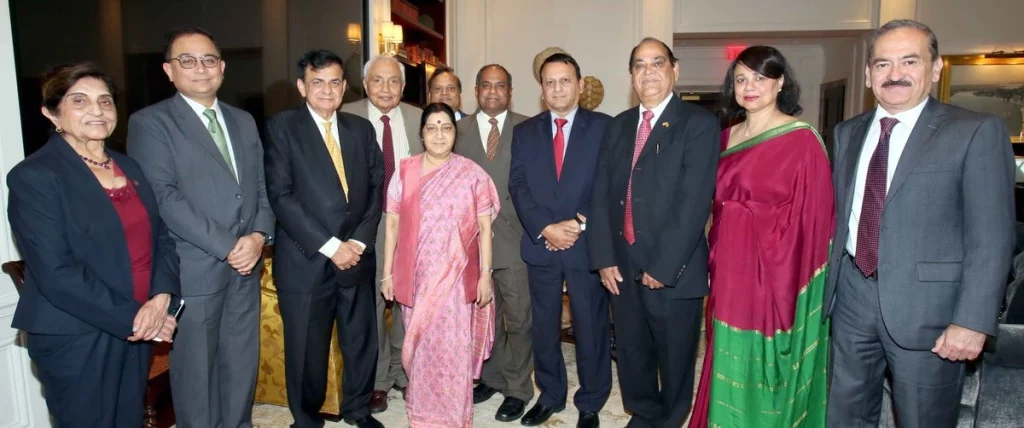
Dr Abraham with a GOPIO delegation meeting the then-External Affairs Minister of India, Sushma Swaraj in New York in 2018 | Photo Credit: CGI-New York
The power of networking and birth of GOPIO
The idea of GOPIO emerged in 1989 when Dr Abraham convened the First Global Convention of People of Indian Origin in New York. After months of meticulous planning and hard work, it was a huge success. More than 3,000 delegates from various countries attended, and GOPIO was officially formed.
Building a global movement in the pre-Internet era was no easy feat. Communication was far more challenging, requiring the organizing committee to travel and meet people in person. Despite these hurdles, Dr. Abraham successfully assembled teams across Europe, the Caribbean, and the Far East, forging connections and spreading the message. “Finally, this effort culminated in a conference in 1989 in New York City, where the Government of India extended its support, sending a delegation led by Madhav Rao Scindia. We had around 3,000 delegates from 26 countries, and that is how GOPIO was born,” he shared in an interview.
The then Prime Minister of India, Rajiv Gandhi, supported the movement and became an honorary patron. His endorsement helped lay the groundwork for future initiatives, including Pravasi Bharatiya Divas (PBD), an annual gathering celebrating the Indian diaspora.
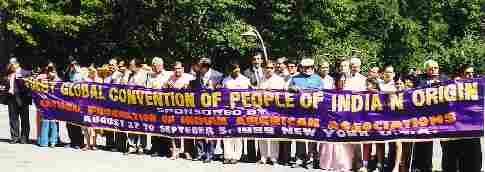
Delegates of the First Global Convention of People of Indian Origin present convention resolutions at the United Nations on Sept. 2, 1989 | Photo Credit: LokVani
Initially, GOPIO focused on combating human rights violations against People of Indian Origin. “Our people were facing discrimination in several countries. Fiji’s elected government was overthrown, apartheid was affecting Indians in South Africa, and even in the U.S., hate crimes against Indians were on the rise,” Dr. Abraham recalled. GOPIO emerged as a platform for Indians worldwide to unite and advocate for their rights. Over time, its focus expanded to address other global issues.
GOPIO today: A global force for change
From its initial focus on human rights, GOPIO has evolved into a dynamic force working for the economic, social, and cultural advancement of PIOs. It has established chapters in major cities across the globe, from New York to Nairobi, Sydney to Singapore.
Recognising the growing economic power of the Indian diaspora, GOPIO launched the GOPIO International Chamber of Commerce (GICC). It is a network of more than four million businesses owned by PIOs worldwide. “Our goal is to connect them with Indian enterprises to create new synergies,” Dr. Abraham explained. Unlike traditional Indo-U.S. or Indo-British chambers, which focus on large corporations, GICC caters specifically to diaspora businesses, creating opportunities at the grassroots level.
GOPIO has also taken a keen interest in technology transfer. “Indian scientists and engineers abroad are leading the charge in cutting-edge fields like nanotechnology, AI, and space research. Our mission is to channel their expertise into India’s development,” Dr. Abraham emphasized. His own company, Innovative Research and Products (iRAP) Inc, specializes in emerging technologies. The entrepreneur believes that India must “leapfrog into the next generation of innovation.”
View this post on Instagram
India and the diaspora: A two-way relationship
As GOPIO expanded, so did India’s engagement with its diaspora. The introduction of the Overseas Citizen of India (OCI) status allowed PIOs to maintain close ties with their ancestral homeland. Dr Thomas Abraham believes that with millions of people of Indian origin worldwide; incredible milestones for India’s progress can be achieved by harnessing both their intellectual and financial resources.
In an interview a few years ago, he cited the example of China’s diaspora, which played a key role in the country’s economic rise. “The Chinese community abroad invested heavily in China’s development. We need to replicate that model and go even further.”
This vision resonates strongly with India’s current trajectory. As the country embarks on a historic journey of development, its leaders have repeatedly emphasized the importance of involving Indians across the world in this transformation. Whether through investment, innovation, or collaboration, they have highlighted how the diaspora’s contributions make India stronger. From Silicon Valley to Singapore, from London to Lilongwe, Indians are excelling in every field. Recognizing this, various initiatives have been launched to strengthen their bond with their roots and create more opportunities for them to contribute to India’s progress.
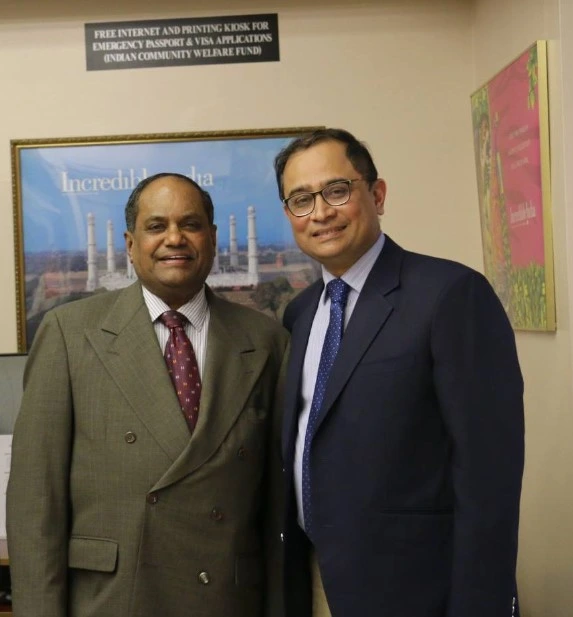
Dr. Thomas Abraham with Consul-General of India Sandeep Chakravorty in New York at the inauguration of the emergency passport and visa application facilities | Photo Credit: CGI, New York
A lifetime of devotion to India
Even after decades in the U.S., Dr Abraham maintains a deep connection to India and considers it his duty to give back.
His dedication is evident in GOPIO’s expansion in India, with chapters in Mumbai, Kolkata, Chennai, Delhi, Bangalore, Ahmedabad, and beyond. “We are seeing a reverse migration, NRIs retiring in India, second-generation Indian-origin people taking up jobs here, and students coming for higher education. GOPIO provides a platform for them to connect and contribute.”
For Dr. Thomas Abraham, GOPIO is more than an organisation, it is a lifelong mission to empower the Indian diaspora and strengthen its ties with India. “We are not just a socio-cultural group; we are shaping the future of global Indians. Whether through business, technology, or advocacy, our community must lead the way,” he remarked.
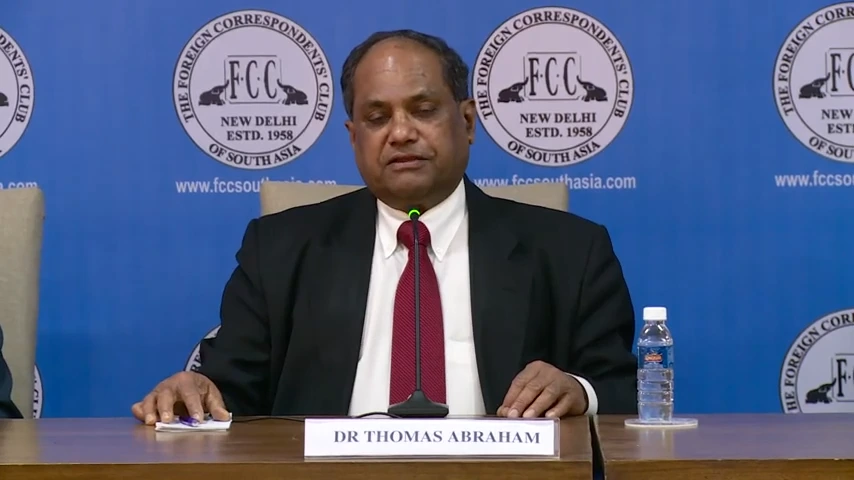
The legacy continues
With 36 years of its existence, GOPIO’s influence continues to grow, bridging the gap between India and its vast diaspora. With Dr Thomas Abraham’s vision, the organisation is poised to play an even greater role in shaping global discourse on Indian identity, advocacy, and progress in the coming years.
From a student leader at Columbia University to the architect of a worldwide movement, Dr. Abraham’s journey is extraordinary. As he puts it, “We started with a dream of uniting Indians worldwide, and today, we are a force to reckon with.” GOPIO’s journey continues.
- Follow Dr Thomas Abraham on LinkedIn
- Read More Fascinating Stories



